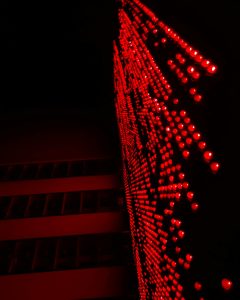How do moving head lights enhance your stage production?
Introduction to moving head lights
When it comes to stage production, lighting can make or break the entire experience. Among the numerous tools available to designers and technicians, moving head lights stand out for their versatility and dynamic capabilities. Imagine a concert where beams of light dance across the audience, creating an electrifying atmosphere that pulls everyone in. Or think about a theatrical performance enhanced by stunning visuals that change with each scene.
Moving head lights have revolutionized how we perceive performances, providing endless possibilities for creativity and expression. From concerts to corporate events and theater productions, these innovative fixtures bring artistry to life on stage like never before. Let’s explore how moving head lights enhance your stage production and why they’re essential for any successful event.
History and evolution of moving head lights in stage productions
Moving head lights have transformed stage productions since their inception in the late 1980s. Initially, these innovative fixtures were primarily used in nightclubs and concerts, offering a new way to engage audiences through dynamic lighting.
As technology advanced, moving head lights became more sophisticated. The introduction of computerization allowed for precise control over patterns, colors, and movements. This evolution opened up creative possibilities for designers and artists alike.
By the early 2000s, they made a significant mark on theatrical performances. Productions began incorporating them not just for illumination but as storytelling tools that enhanced mood and atmosphere.
Today’s moving head lights boast features like LED technology and wireless capabilities. They seamlessly integrate into complex lighting setups while becoming essential elements in various entertainment sectors—from Broadway shows to large-scale festivals—demonstrating their versatile impact on visual artistry.
Types of moving head lights used in different stage productions
Moving head lights come in various types, each serving specific purposes in stage productions.
Spotlights are popular for their precision. They focus beams tightly on performers or key moments, drawing audience attention where it matters most.
Wash lights provide a broader illumination. These fixtures create vibrant color washes across the stage, enhancing mood and atmosphere without overwhelming detail.
Beam lights produce sharp, narrow beams that slice through fog or haze. Their striking effects can transform any scene into an exhilarating visual experience.
Hybrid moving heads combine features from both spot and moving head light wash categories. This versatility makes them favored choices for complex productions needing dynamic lighting transitions.
LED moving heads are becoming increasingly common due to their energy efficiency and longevity. With countless color options at your fingertips, they open up new creative avenues for designers seeking innovation in their shows.
Advantages of using moving head lights in stage productions
Moving head lights transform stage productions in remarkable ways. They offer versatility that static lights simply cannot match. With the ability to pan, tilt, and zoom, these fixtures create dynamic lighting effects that elevate performances.
Flexibility is a major advantage. Designers can program intricate light shows tailored to specific scenes or moods without needing extensive rigging changes.
Energy efficiency also plays a role. Many modern moving heads use LED technology, consuming less power while producing brilliant illumination.
Moreover, they enhance audience engagement by adding depth and drama to the visual experience. A well-timed spotlight can draw attention exactly where it’s needed.
Moving head lights enable seamless transitions between different looks throughout a performance. This adaptability ensures every moment feels fresh and captivating for viewers from start to finish.
Tips for incorporating moving head lights into your production design
When incorporating moving head lights into your production design, start by identifying key focal points on stage. This will help you determine where the lights can create maximum impact.
Next, consider the color palette of your show. Moving head lights offer a wide range of colors and effects. Use this versatility to enhance mood and atmosphere throughout performances.
Positioning is crucial. Tips for using moving head lights Experiment with angles and heights to avoid harsh shadows while ensuring even coverage across the stage. Test different placements during rehearsals for optimal results.
Don’t forget to synchronize lighting cues with music or action onstage. This coordination creates dynamic moments that captivate audiences.
Keep maintenance in mind. Regular checks ensure consistency in performance, allowing your team to focus more on creativity rather than troubleshooting equipment issues mid-show.
Case studies: successful stage productions that utilized moving head lights
One notable example is the Broadway hit “Hamilton.” The production employed moving head lights to create dynamic scenes that matched the energy of its music and choreography. These lights helped emphasize dramatic moments, enhancing audience engagement.
Another successful case is the Coachella Music Festival. Artists like Beyoncé utilized moving head lights to transform her performances into visual spectacles. The flexibility of these fixtures allowed for rapid changes in mood and atmosphere, captivating thousands.
Cirque du Soleil’s “O” also showcases creative use of moving head lights. They synchronized lighting effects with acrobatics, providing an immersive experience that captivated viewers from start to finish.
These productions exemplify how innovative lighting design can elevate a performance beyond mere visuals, creating memorable experiences for audiences around the world. Each instance demonstrates the transformative power of moving head lights in storytelling through stagecraft.
How to choose the right moving head lights for your budget and needs
Choosing the right moving head light involves understanding your specific needs. Start by assessing the size of your venue. Larger spaces may require more powerful lights for effective illumination.
Next, consider the type of production you’re staging. Will it be a concert, theater performance, or corporate event? Each setting has different lighting requirements to create the desired atmosphere.
Budget is also crucial. Determine how much you’re willing to invest without compromising quality. Explore options ranging from entry-level fixtures to high-end models.
Don’t forget about features like color mixing, beam angle, and control capabilities. These elements can greatly enhance your production’s visual impact.
Seek advice from professionals or rental houses if you’re unsure. They can provide insights tailored to your situation and help you make an informed decision that aligns with both budget and creative vision.
Conclusion
Moving head lights have become essential in modern stage production, transforming the way performances are experienced. Their ability to create dynamic lighting effects enhances storytelling and captivates audiences. As technology continues to advance, these fixtures will undoubtedly evolve further, pushing creative boundaries.
When selecting moving head lights for your production, consider your budget and specific needs. With numerous options available on the market today, you’ll find a variety of features that can suit any performance style or venue size. From theater shows to concerts and corporate events, incorporating moving head lights can elevate your production’s overall impact.
The right choice can make all the difference in creating an immersive experience for both performers and viewers alike. Whether you’re aiming for dramatic spotlighting or subtle washes of color, investing in quality moving head lights is a decision that pays off—enhancing every aspect of your stage design.



